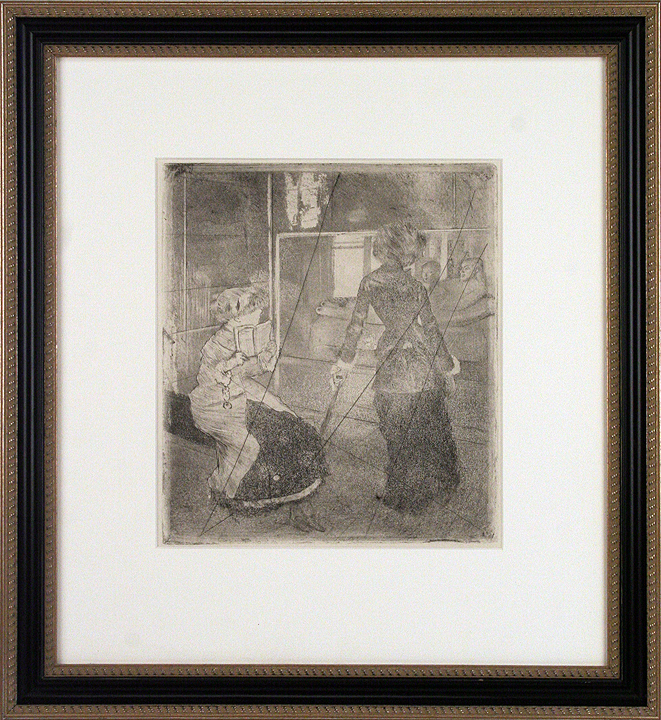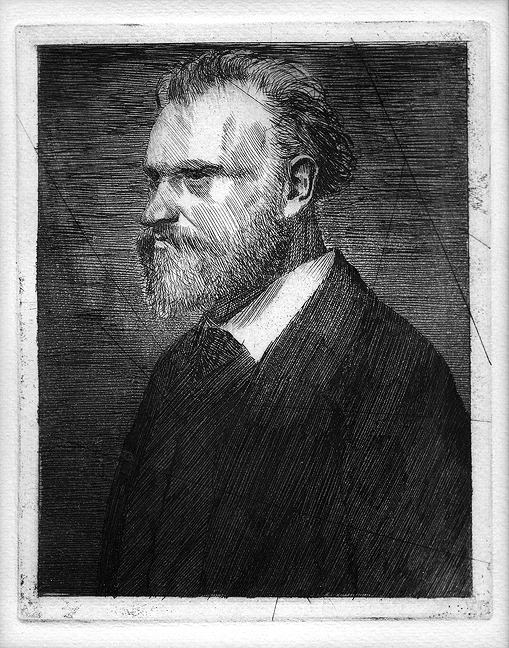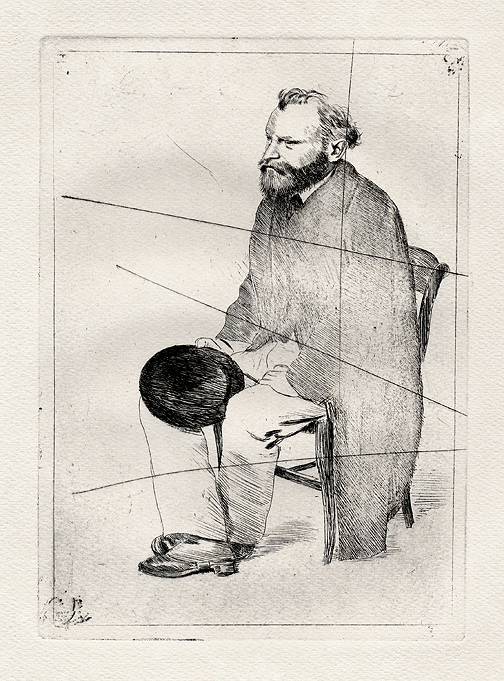- Edgar Degas
( Hilaire Germaine Edgar Degas )
( French, 1834 - 1917 )
- Currently featuring 3 graphic works, please scroll down.

Mary Cassatt au Louvre, Musée des Antiques, 1879-80
Inventory # 51288
-
Original etching, drypoint, and aquatint with full margins printed on wove paper. From the seventh state of seven after the cancellation of the plate, circa 1919-1920. From and edition of approximately 150.
Image: 9 3/16" x 10 1/2"; sheet: 9 13/16" x 12 7/8"
Catalogue reference: Delteil 30, Adhémar 53, Reed & Shapiro 51At the close of the fourth Impressionist exhibition (April 10-May 11, 1879), discussions were already underway for Degas's proposed journal of original prints, Le Jour et la nuit (Day and Night). The financial success of the exhibition encouraged Degas to enlist the participation of his friends. In a diary entry, May 16, 1879, the novelist Ludovic Halévy wrote: "Visit to Degas. I met him in the company of L’indépendante Miss Cassatt, one of the exhibitors of the rue de la Paix. They are very excited. Each has a profit of 440 francs from their exhibition. They are thinking of launching a journal; I ask to write for it."
At the same time, letters from Degas implore Félix Bracquemond, master of the etching medium, to join his venture and to give advice on the intricate technical skills desired by Degas for the execution of these special prints for a wide audience. A well known letter to Pissarro transmits much of the experimental information and confirms Degas’s wish for great success: "remember that you must make your début with one or two very, very beautiful plates of your own work." Along with Pissarro, Mary Cassatt, Jean-François Raffaëlli, and Marcel Desboutin, Degas prepared prints from the fall of 1879 through the early months of 1880. At the fifth Impressionist exhibition (April 1-30, 1880) works executed for the journal were in fact exhibited by Cassatt, Pissarro, and Degas’s " Mary Cassatt au Louvre, Musée des Antiques " was almost certainly included on this unique occasion among his exhibited prints.
Unfortunately for Degas, in spite of his intentions and expectations of great success for the journal, it seems that the group’s experimentation with printmaking techniques became a beginning and end in itself, the formal assembly and publication of a journal becoming lost in the process. No issue of a journal of prints ever appeared.
An edition of 150 impressions was printed for Ambroise Vollard circa 1919-20 from 21 copper plates which had been etched by Degas between 1855 and 1884, but which had since been canceled, " Mary Cassatt au Louvre, Musée des Antiques " amongst them. Vollard planned to utilize the impressions as part of a book on the artist and his work. Loys Delteil found out about this Vollard project at the same time his own catalogue raisonné on the graphic oeuvre of Degas was at press. Printed on Japon paper, the 21 etchings were released without a cover or title page, after the book project was abandoned by Vollard for unknown reasons.
The identities of the two museum visitors in Degas’s print have often been discussed; however, many of the artist’s contemporaries recognized in one of them the distinctive bearing and costume of Mary Cassatt. It is generally accepted that the standing figure is Mary Cassatt and the seated figure holding a guidebook may be her sister, Lydia.

Manet en Buste, c. 1861
Inventory # 51381
-
Original etching and aquatint. Printed from the cancelled plate.
Platemark: 5" x 4 1/8", sheet size: 12 1/8" x 9 1/4"
Catalogue reference: Adhémar & Cachin, plate 17.

Manet Seated, left profile, 1864-65
Inventory # 49268
-
Original etching printed from the cancelled plate. From the second and final state according to Adhémar. In excellent condition.
Platemark: 6 3/4" x 4 3/4"; sheet size: 12 15/16" x 9 1/2"
Catalogue reference: Adhémar & Cachin 18; Reed & Shapiro 17.Edouard Manet's paintings of modern life, exhibited in the Salon des Refusés of 1863, established influencial new directions for French art and for Degas. The change of style seen in Degas' portraits of Manet executed about the same time reflects this influence and pays hommage to its creator. Degas' comfortable relationship with Manet may have induced him to show his friend in relaxed, informal poses. Indeed, this etching represents a distinct change in style from Degas' earlier prints because of its strong sense of contemporary life.
|
|
|
|
while this fine work is available